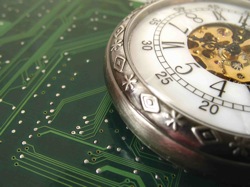A magazine where the digital world meets the real world.
On the web
- Home
- Browse by date
- Browse by topic
- Enter the maze
- Follow our blog
- Follow us on Twitter
- Resources for teachers
- Subscribe
In print
What is cs4fn?
- About us
- Contact us
- Partners
- Privacy and cookies
- Copyright and contributions
- Links to other fun sites
- Complete our questionnaire, give us feedback
Search:
Billions of processors shipped

Which country do you think is responsible for designing the most computer processors used worldwide?
Processors are of course the brains of computerised gadgets, whether PCs or mobile phones, DVD players or SatNavs, game consoles or MP3 players. Without the processors there would have been no mobile revolution. None of the gadgets you take for granted would exist. So who has been making it possible?
Who do you think it is?
What are the choices? The US perhaps? They have lots of famous hi-tech companies: Intel and IBM, Motorola and Microsoft, Apple and Google. Do they design processors though? Intel and Motorola still do but are they Number One? What about Japan? That must be another possibility, with the likes of Sony and Nintendo. Japan is a place you think of as leaders in the field of hi-tech games and gadgets, but they design the gadgets, not the processors that make those gadgets possible. Now that we are thinking of gadgets rather than PCs, Finland is maybe a contender. Nokia are one of the companies behind the mobile phone revolution. But are they responsible for the processors they use, or do they just buy them in?
From start-up to world domination
Actually the answer is the UK. A British company, ARM, has shipped well over 20 billion processors. That is vastly more processors than all the other companies put together! They grew from a small Acorn of a start-up company set up in 1985. The processors they design are in just about every kind of gadget you can imagine, from phones to games consoles.
So how did ARM end up dominating the processor industry, and how come they sell more than older, more famous giants like Intel? Well, it boils down to basic economics and an electronics revolution known as 'systems-on-a-chip'.
The economics is simple. ARM chips can be as cheap as 10 cents each - far cheaper than the other chip manufacturers. Cheap enough to go into anything. Why? Because they rode the system-on-a-chip revolution rather than the PC revolution.
Out of a vacuum
The early computers of the 1940s were made of vacuum tubes. They were big glass bulbs with almost all the gases sucked out, in which clouds of electrons could be made to flow around so that controllable voltages and currents could form within them. By connecting them together it was possible to start making machines that could compute.
In the 1950s, vacuum tubes were replaced by transistors: basically the same but smaller, because now the electron clouds formed in special solids rather than a vacuum. No glass tubes needed. In the 1960s engineers found a way to squeeze lots of transistors – 10 or 20 – into one small case. Processors were made from collections of these 'integrated circuits' and as a result they got smaller. Soon it became possible to think of putting a whole processor on a chip. By the early 1970s, as transistors could be made smaller and smaller hundreds of thousands of transistors were crammed onto single chips.
One case fits all
This is the point where the idea of systems-on-a-chip comes into the story. In the 1990s the entire computer system, not just a processor, could be packaged on one chip: manufactured in one go and put in a single case. That meant they could be small and very, very cheap. A whole gadget with a chip at its core could now fit in your pocket, and be made cheap enough that everyone could afford one. It was that revolution that ARM pioneered. Rather than designing chips to form part of complex PC systems that would still be expensive, they designed cheap systems-on-a-chip that could control mobile phones. As the system-on-a-chip revolution then took off, all the other pocket-sized gadgets we now take for granted followed.
They think it's all over!
Is that the end of the story? Of course not! Don't underestimate the ingenuity of the electronics engineers and computer scientists responsible. Things have already moved on again. Now we can fit several entire computers on a single chip. This is called multi-core technology. Rather than trying to design ever faster processors, the focus has changed to putting more and more simple computers into one case.
The challenge now is to work out how on earth we program these multi-core chips so that the separate processors work together, letting us exploit their phenomenal computer power. Right now no-one knows how to do that...
...but we will.
This article is based on part of the Kilburn Lecture given by Professor Steve Furber of the University of Manchester on 20th June 2008.


